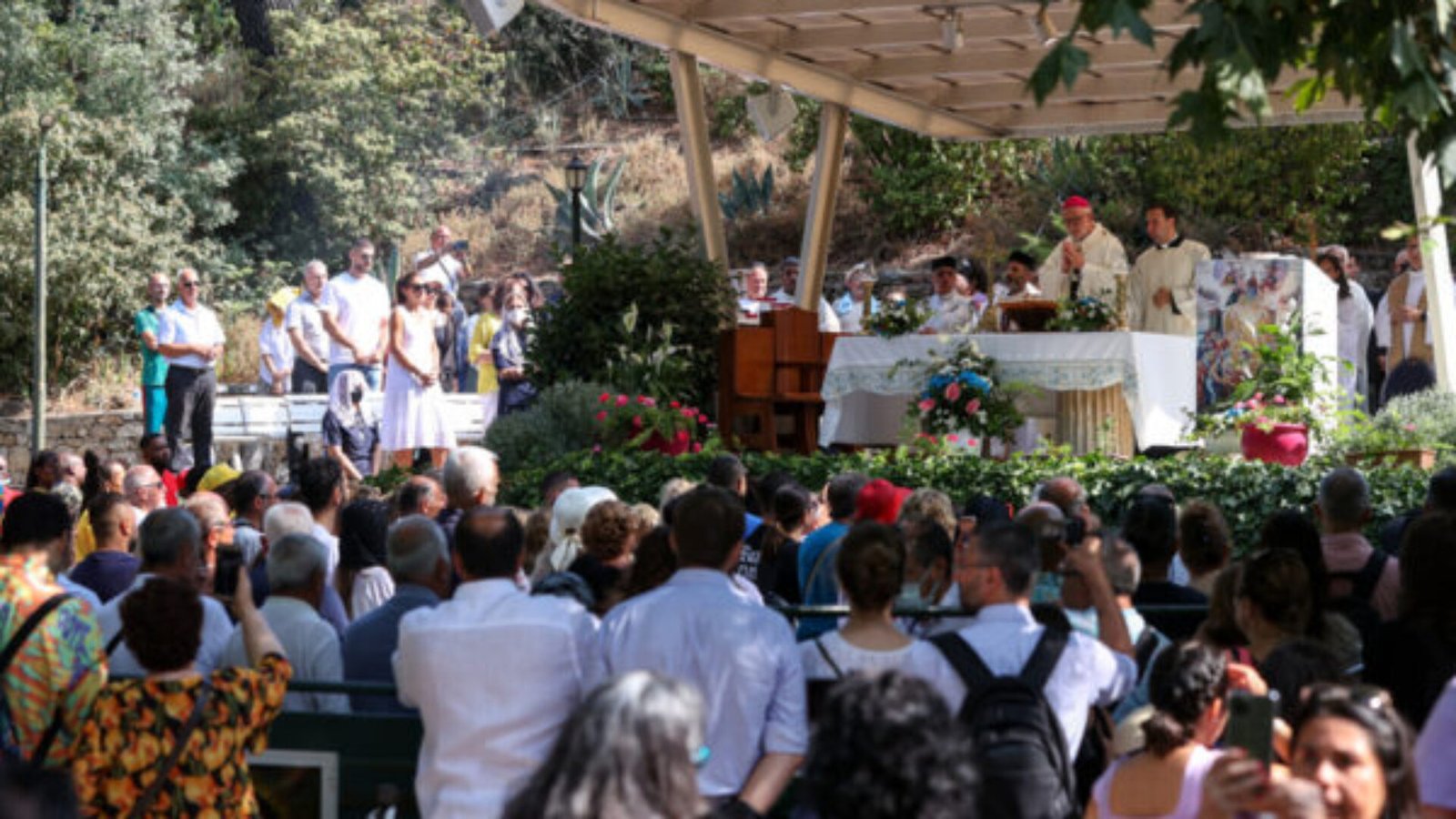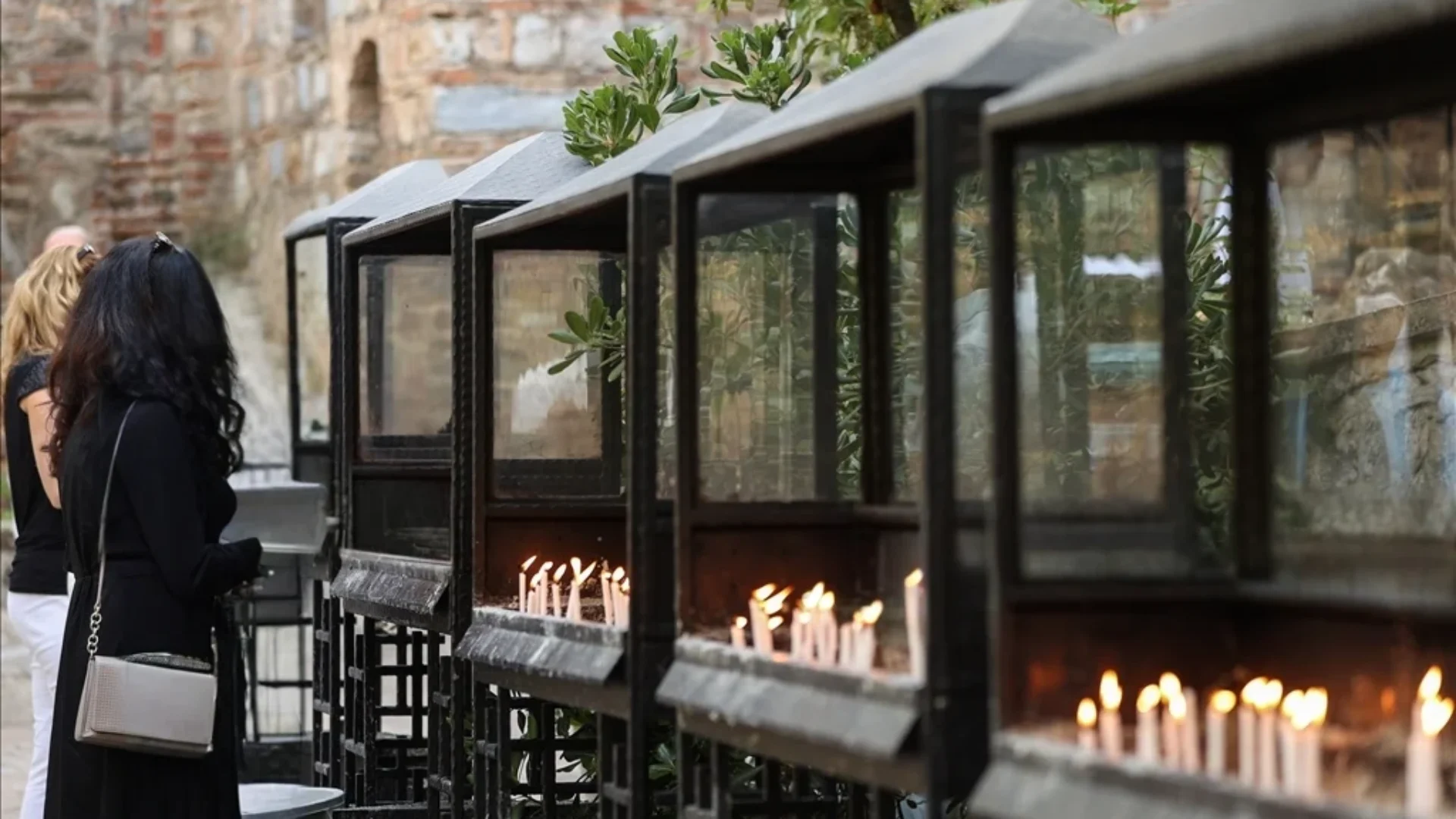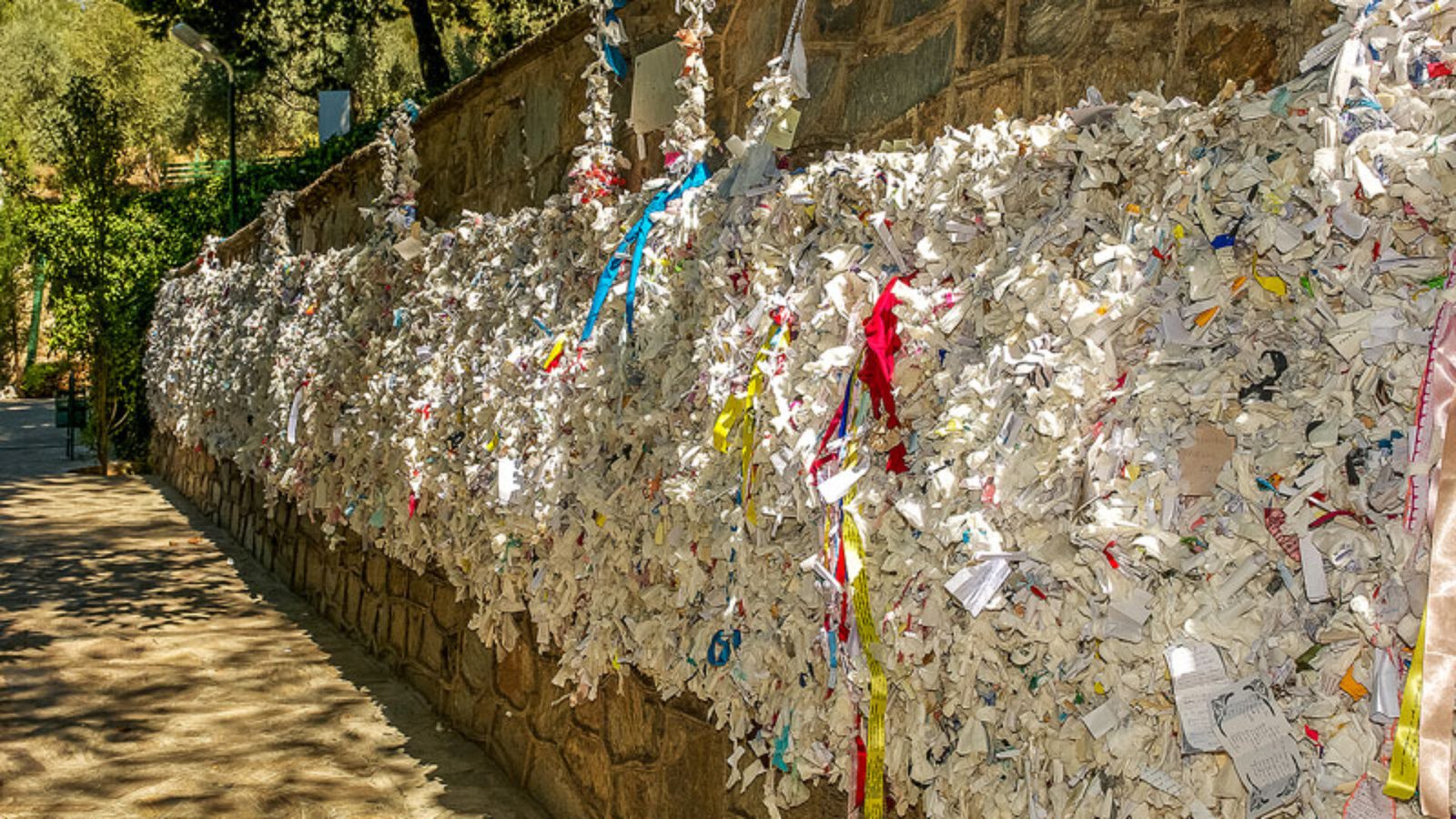



House of Virgin Mary: Pilgrimage Rituals, Mass Times, Candle Lighting & Sacred Traditions
Introduction
The House of Virgin Mary, located near ancient Ephesus in Turkey, is more than a historical landmark — it is a living sanctuary of faith, peace, and divine reflection. For centuries, this humble stone dwelling on Mount Koressos has drawn millions of visitors, pilgrims, and believers from around the world.
They come not only to see where Mary, the Mother of Jesus, is believed to have spent her final years, but to feel the serenity and spiritual presence that fills the air.
This guide offers a complete overview of the pilgrimage experience: from Mass times and sacred rituals to the symbolic candle-lighting, holy water springs, and the famous Wishing Wall. Whether you are planning your visit or connecting from afar, this sacred journey will touch your heart and soul.
Mass Times and Sacred Rituals
Attending Mass at the House of Virgin Mary is a deeply emotional experience. Inside the small chapel, rays of sunlight fall on ancient stones as voices unite in hymns and prayers.
Visitors often describe it as one of the most peaceful moments of their lives — a place where heaven and earth seem to meet.
Mass Schedule:
Monday–Saturday: 5:15 PM (Nov–Mar) / 6:15 PM (Apr–Oct)
Sunday: 10:30 AM (in English)
The rituals extend beyond the liturgy. Pilgrims light candles, pray silently, and reflect on their blessings. Many bring written intentions, asking for healing, forgiveness, or strength.
The atmosphere is both solemn and hopeful — a reminder that faith transcends time, language, and religion.
Even those who are not Christian often find the site moving, as it symbolizes divine motherhood, compassion, and love shared by all humanity.
Travel Guide: How to Reach the House of Virgin Mary
The shrine is located approximately 9 km from Selçuk, 25 km from Kuşadası, and 74 km from Izmir.
The scenic drive through pine forests offers breathtaking views of the Aegean hills, making the journey part of the pilgrimage itself.
Transportation Options:
🚕 Taxi or Private Transfer: The most comfortable and flexible way to visit.
🚌 Dolmuş / Local Bus: A budget-friendly option that lets you experience local culture.
🚗 Rental Car: Ideal for those who wish to explore nearby attractions such as Ephesus Ancient City, Temple of Artemis, or the Basilica of St. John.
Insider Tip: Arrive early in the morning or late afternoon to enjoy the peaceful atmosphere without crowds. The light at sunset adds a golden glow that makes the site even more magical.
Light a Candle Tradition
Lighting a candle at the House of Virgin Mary is a centuries-old act of devotion.
Each flame represents a prayer — for health, peace, gratitude, or guidance.
The soft glow of hundreds of candles flickering together creates a mesmerizing atmosphere that feels timeless.
Those who cannot visit in person can still participate. The “Light a Candle Online” tradition allows people around the world to share their prayers digitally. From New York to Manila, from Berlin to Rio — millions have joined this virtual circle of faith, proving that devotion knows no distance.
In every culture, light has symbolized hope overcoming darkness, and at this holy place, the meaning is beautifully alive.
The Wishing Wall: Faith and Hope
Just outside the chapel stands the Wishing Wall, one of the most iconic features of the House of Virgin Mary.
It is covered in thousands of small papers, ribbons, and cloth pieces carrying handwritten prayers and wishes from visitors.
This moving tradition reflects both Christian and ancient Anatolian customs — the belief that writing one’s wish and leaving it in a sacred place brings divine attention.
Visitors write messages for love, healing, peace, or protection. Some pray for their families, others for the world. The sight of countless folded notes fluttering in the wind reminds every pilgrim that they are part of a global community of faith.
Over the years, even popes and world leaders have visited the site.
Pope Paul VI, Pope John Paul II, and Pope Benedict XVI each blessed this shrine, declaring it a place of unity for all believers.
Pilgrimage Tips & Best Seasons to Visit
A pilgrimage to the House of Virgin Mary is not only a trip — it’s a spiritual journey that connects body, mind, and soul.
Best Time to Visit:
Spring (April–May) and autumn (September–October) offer mild weather, blooming nature, and fewer tourists.
Dress Code:
Modest attire is expected in the chapel. Shoulders and knees should be covered as a sign of respect. Comfortable walking shoes are essential — the path can be uneven.
Essentials to Bring:
Water, sunscreen, a small scarf, and a quiet heart.
Bringing a small notebook to write your prayer can make the experience more personal.
Local Tip:
Combine your visit with nearby attractions like the Ephesus Ruins, Temple of Artemis, or St. John’s Basilica. Together, they form a sacred triangle of history, faith, and ancient beauty.
Holy Water: The Sacred Springs of Mary
Beneath the chapel flows a series of sacred springs, believed to be blessed by the Virgin herself.
The three taps represent Health, Love, and Prosperity — pilgrims often drink or collect this water in small bottles to take home.
The holy spring is clear, cool, and refreshing. Visitors describe feeling spiritually renewed after drinking it, as though washing away fatigue and worry.
Even scientists have tested the water and found it to be exceptionally pure.
Beyond symbolism, the holy water represents the continuity of faith — flowing endlessly through generations, connecting those who came before with those who will follow.
Pilgrim Experience & Guided Tours
Many visitors choose to join guided tours from Selçuk or Kuşadası, which provide historical and spiritual context throughout the journey. Licensed guides often share touching stories about the discovery of the house in the 19th century, the visions of Sister Anne Catherine Emmerich, and the first archaeological confirmations that followed.
Walking through the forest path, you can hear the bells of the chapel in the distance and smell the pines mixed with incense. The experience combines nature and spirituality — a reminder that faith can be felt through every sense, not only through prayer.
After Mass, local souvenir shops sell handmade crosses, rosaries, and small bottles to fill with holy water. Buying these items supports nearby families who have protected the shrine for generations.
Architecture & History Details
The stone house itself is simple yet profound. Archaeologists have dated its foundations to the 1st century AD, while later walls were restored by early Christians who kept the memory of Mary alive.
Inside, the low arched ceiling and small altar create an atmosphere of deep intimacy. No photographs are allowed during services, preserving the sacred silence.
Outside the chapel stands a bronze statue of the Virgin surrounded by blooming flowers, symbolizing purity and rebirth. Each element of the site — the spring, the wall, the candles — tells part of a story that unites history and faith.
Community and Pilgrimage Events
Throughout the year, several events celebrate the spiritual heritage of this holy site.
The most significant is the Feast of the Assumption of Mary on August 15, when thousands gather for special Mass, hymns, and processions carrying candles at dusk.
Local choirs sing in Turkish, Latin, and English, turning the hillside into a sea of light.
During Easter and Christmas, smaller services are held, often joined by travelers who combine their Ephesus tours with a visit to the shrine.
These gatherings transform the mountain into a living symbol of faith, echoing prayers that have been whispered here for centuries.
Cultural and Interfaith Significance
The House of Virgin Mary is one of the few pilgrimage sites revered by Christians and Muslims alike.
In Islamic tradition, Mary (Meryem Ana) is honored as the purest woman and mother of Prophet Jesus (Isa).
This makes the shrine a powerful symbol of peace and coexistence between faiths.
Every year, Muslims visit the site alongside Christians, lighting candles and offering prayers in their own way — proving that spiritual devotion transcends religion.
Local families often visit on weekends, lighting candles for their children’s future, or simply sitting in silence among the pine trees.
It’s a rare place where different beliefs meet in harmony.
Visitor Reflection: A Moment Beyond Time
Many pilgrims describe a profound calmness when standing in front of the house.
Birds sing softly, incense drifts in the air, and the surrounding forest muffles all noise from the world below.
It is said that if you stand still and listen, you can hear your own heart echoing — reminding you of the divine peace within.
For some, visiting the House of Virgin Mary becomes a turning point in life — a moment to forgive, to start anew, or simply to find gratitude.
The experience is both intimate and universal.
Visiting Hours and Entrance Fee
As of 2025, the entrance fee is 500 Turkish Lira (≈12–13 Euros) per person.
Payment by Visa and Mastercard is accepted.
Opening Hours:
November–February: 08:00 – 17:00
March–October: 08:00 – 18:00
Try to align your visit with the daily Mass or arrive early for quiet contemplation before the crowds arrive.
Conclusion: A Journey of Faith and Light
The House of Virgin Mary is not just a destination — it is a living message of hope, faith, and love.
Every visitor, regardless of belief, feels a silent blessing when walking through the stone courtyard, touching the holy water, or leaving a note at the Wishing Wall.
Whether you light a candle, attend Mass, or collect sacred water, you become part of a centuries-old story — a bridge connecting the human heart to the divine.
Before leaving, take a deep breath, look back at the stone house, and remember that peace begins here — in quiet devotion and eternal faith.
Learn more about the sacred journey and pilgrim routes of the House of Virgin Mary in Ephesus, Turkiye — where visitors collect holy water, light candles, and leave wishes on the Wishing Wall.
Pilgrims often combine their visit with nearby sacred and historical sites, such as the Temple of Artemis and tours from Kusadasi to Ephesus. These journeys reflect centuries of faith, devotion, and heritage across the ancient lands of Asia Minor.
To explore more about the history, miracles, and cultural traditions of Meryem Ana Evi, download our Free Guidebook or visit the official Wikipedia article about the House of the Virgin Mary.
